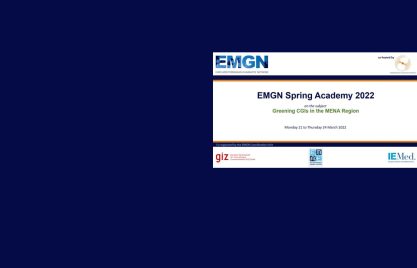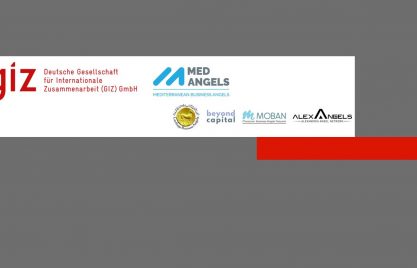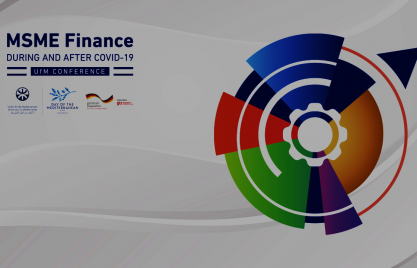Microfinance sector stakeholders from across the region and beyond convened in Sharm El Sheikh for this year’s annual conference of Sanabel, the regional microfinance network of Arab countries. From October 20-21, the overarching theme “Progress towards Financial Inclusion: Global Trends and Regional Initiatives” highlighted topics ranging from policies and regulations, private sector engagement and financial technology to product innovation.
Global Trends in Financial Inclusion
Global forces accelerate financial inclusion in the MENA region. New players, such as mobile network operators and payment service providers, have spearheaded new financial services ranging from SME loans to digital payments. The private sector drives the transition from microfinance to financial inclusion. Policymakers and financial sector regulators supported by donors and funders are increasingly taking over roles in a systematic approaches to enable more inclusive financial sectors.
Financial inclusion policymaking is supported by peer learning through global networks like the Alliance for Financial Inclusion (AFI). In more than 50 countries, including Palestine, Jordan and Morocco, policymakers embark on national financial inclusion strategies (NFIS) based on a consultative policy processes involving multiple public and private sector stakeholders. Arab financial policymakers and regulators are catching up with these global trends. The Arab Monetary Fund (AMF), GIZ and other international organizations are supporting these important developments.
Enabling policies, new players, and technology led to the emergence of digital financial services (DFS), which gave financial inclusion a remarkable boost. Hayder Al-Bagdadi from the GIZ MFMR programme highlights: “Payments are seen as the gateway to financial inclusion. With the digitization of payments in Kenya, for example, access to financial services has increased from 26% to 67% between 2006 and 2013. Jordan has developed a cutting-edge regulatory environment and infrastructure to enhance digital payments.”
Lessons Learnt in Microinsurance
Representatives from insurers, international organizations and experts came together to pinpoint the driving forces and challenges for the further development of microinsurance markets in the MENA.
Hands-on experience of Mr. Ahmed Helmy, Director at Commercial International Life Insurance, reaffirms that product development in alignment with the specific needs of different client segments is key for the take up of microinsurance. Efficient operations and strong partnerships among insurers and MFIs are needed to improve effective outreach. Drawing on own experience from distributing insurance, Mr. Youssef Bencheqroun from the Moroccan MFI Al Amana, confirmed this by calling for more flexibility on the side of insurers.
Elaborating on the role of donors based on success stories from Nigeria and Ghana, Mr. Thomas Wiechers, insurance Advisor from GIZ, pointed out that product complexity, claims payment, and local language barriers are the main challenges facing the expansion of microinsurance.
GIZ Sanabel Award
The GIZ/Sanabel Gender Award recognizes MFIs that demonstrate innovative approaches to enhance women’s access to financial services. Applications for this year came from eight MFIs representing Egypt (3), Jordan (2), Palestine (1) and Yemen (2).
After a rigorous selection process, this year’s award was granted to two instead of one candidate: Al Amal Bank Microfinance from Yemen and Dakahlia Businessmen Association for Community Development (DBACD) from Egypt won the prize money of USD 10,000. Al Amal Bank focused on rural women in Yemen through products designed specifically to meet their needs. This includes collective rural group which allows women to borrow up to USD 1,000 with the precondition of managing a micro or a small project and joining a saving group including women in her village. There is also a financial inclusion service for mothers to encourage them to save through awareness programs and opening up free saving accounts for them. Al Amal Bank made an innovative use of technology to deliver their services through a mobile bank branch connected through the internet to the main bank and also their phone services through which women to pay bills and transfer money.
DBACD focused on enhancing their own products to meet the emerging needs of women, they introduces a credit product with a maximum of USD 510 in which women can pay back through weekly or monthly installments. Women are also provided with financial literacy training, in addition to training to educate women about pricing and the marketing their products. Moreover DBACD recruited women loan officers to better deal and reach women in rural areas as they live in the same area as their women’s clients. Their approaches to provide women with finance will be internationally promoted.
Financial inclusion policy making and peer learning, private sector engagement and new technology have characterized the progress in a holistic approach to financial inclusion. These trends hold promise for the further development of the microfinance sector in Arab countries, including for customer-centric, responsible microinsurance and further innovations in gender finance.
By Sahar Al Youssef, Noheir Khairy and Atilla Yuecel



